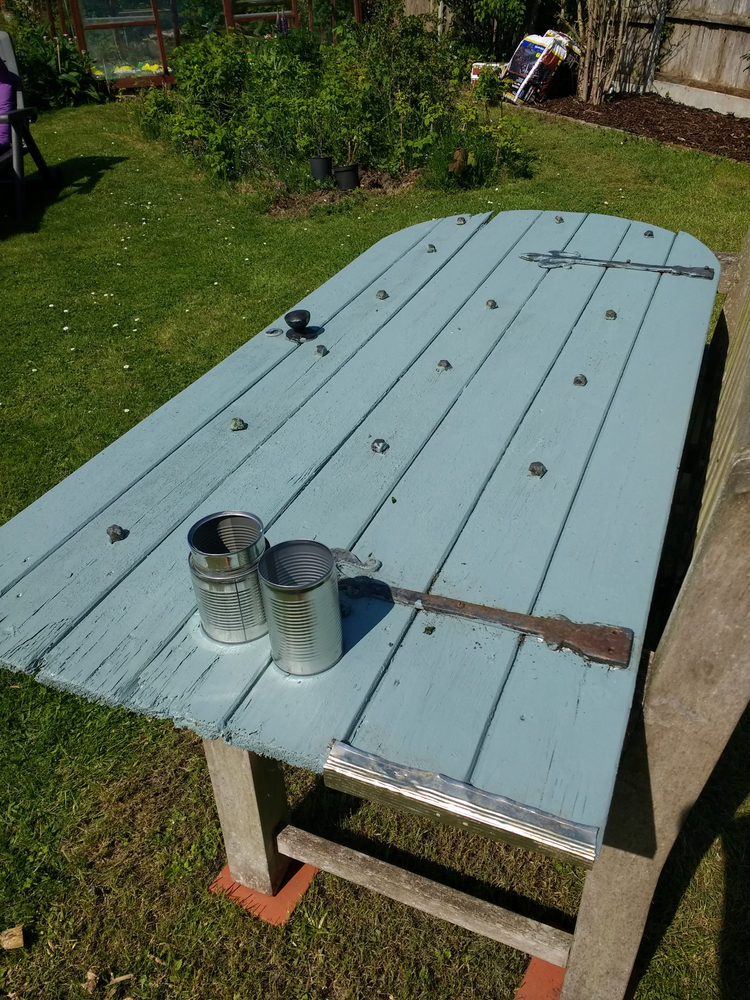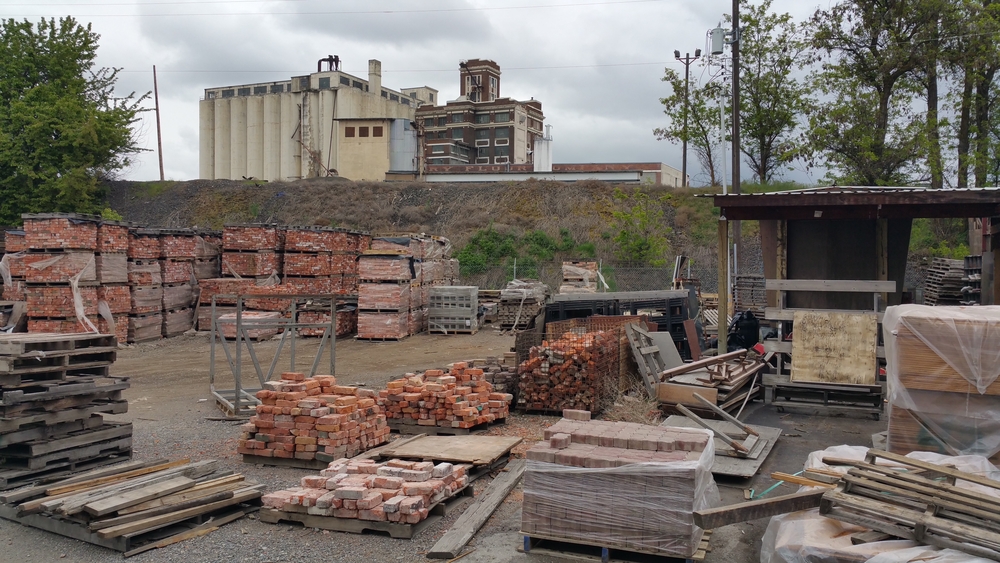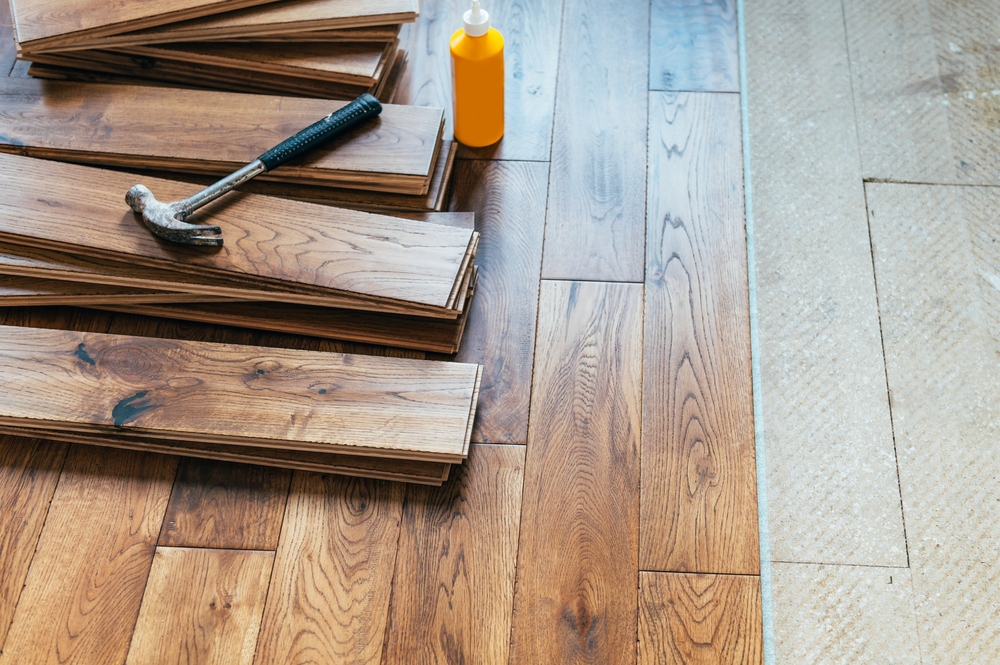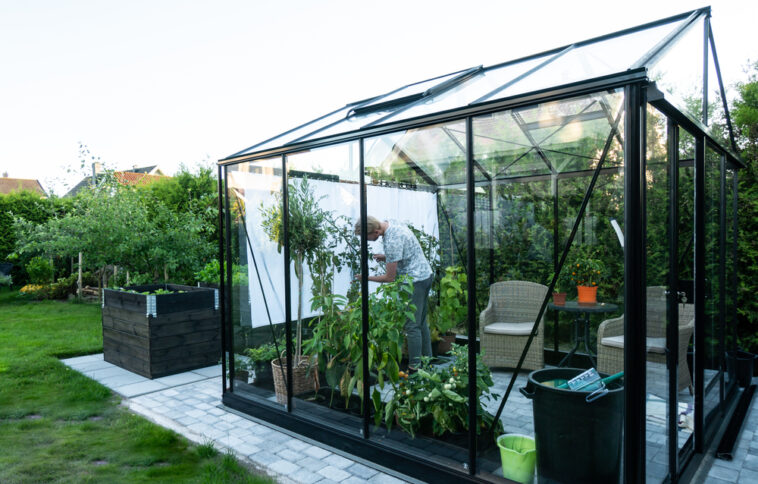Building a DIY greenhouse can be an incredibly rewarding project, especially if you have a green thumb. This guide will offer step-by-step instructions, tips, and suggestions to ensure you get the most out of your DIY greenhouse. We will delve into the planning process, the different types of materials you can use, and the various stages of construction.
Understanding the Basics of a Greenhouse
A greenhouse is a structure with walls and roof made primarily of transparent material such as glass or plastic, in which plants requiring regulated climatic conditions are grown. Greenhouses protect plants from extreme weather conditions and allow you to grow plants that might not otherwise survive in your climate. Understanding the basics of a greenhouse is essential before you start building your own.
What Are the Benefits of a Greenhouse?
Owning a greenhouse comes with several advantages. Here's a more detailed exploration of the numerous benefits greenhouses offer:
- Extended Growing Season: A greenhouse creates a microclimate that traps solar heat, resulting in a warmer internal environment. This characteristic allows you to cultivate various plants throughout the year, regardless of the season. Even in the colder months, your plants will thrive as if it were summer, offering you a year-round supply of your favorite fruits, vegetables, and herbs.
- Protects Plants: A significant advantage of a greenhouse is the protection it provides to your plants. The enclosed structure shields your delicate plants from extreme weather conditions such as hail, heavy rain, frost, or high wind. Additionally, it acts as a barrier against pests and diseases, reducing the chances of your plants falling prey to destructive insects or harmful pathogens.
- Variety of Plant Species: In a greenhouse, you are no longer limited to growing plants native to your geographical location. This unique environment allows you to cultivate a wide array of plant species, including exotic and tropical plants that would not typically survive in your local climate. Greenhouses provide the opportunity to create a diverse garden filled with plants from all over the world, right in your backyard.
- Optimal Plant Growth Environment: A greenhouse allows you to control various environmental factors such as temperature, humidity, and light exposure. By adjusting these parameters, you can create the optimal growth conditions for different plant species. This control leads to healthier, more productive plants and significantly improves the quality and quantity of your yield.
- Sustainability and Resource Efficiency: Greenhouses enable more efficient use of water, a critical resource for plant growth. Through irrigation systems, you can reduce water waste by directing water precisely where it's needed. Additionally, greenhouses reduce the need for chemical pesticides by providing a controlled environment that is less susceptible to pest infestations.
- Gardening Therapy: Beyond the practical benefits, greenhouses can also contribute to your mental well-being. The act of tending to your plants in a serene, green environment can be a form of therapy, reducing stress and promoting a sense of calm and relaxation.
Choosing the Right Location
The location of your greenhouse is crucial as it directly affects the amount of sunlight your plants receive. The ideal spot should receive at least six hours of direct sunlight during the winter months. Avoid locations with shadows from large trees or buildings. Also, consider accessibility to water and electricity sources and make sure the ground is level for stable construction.
Greenhouse Design and Materials
When planning to construct a greenhouse, understanding different designs and materials is crucial. This knowledge will guide you to make a choice best suited for your unique gardening needs, budget, and available space. Below is a more detailed exploration of various greenhouse designs and the materials you can use.
Greenhouse Designs
- A-Frame: The A-Frame is one of the most basic greenhouse designs. As the name suggests, it resembles the letter ‘A' with a peaked roof that slopes down to the ground. This design is straightforward to construct and is ideal for areas with heavy snowfall as the snow easily slides off the sloping roof.
- Hoop: Hoop greenhouses, also known as tunnel greenhouses, consist of a series of large hoops covered with plastic sheeting. This design is relatively inexpensive, easy to build, and allows for excellent light penetration and air circulation.
- Lean-to: A lean-to greenhouse is attached to another structure, like your house or garage. It's a great space-saving design if you have a smaller yard. One side is already insulated by the existing structure, potentially saving on heating costs.
- Victorian: This design is named after its traditional English style. Victorian greenhouses are usually more aesthetically pleasing and built with a heavy emphasis on design elements. They are often made from glass and metal, providing maximum sunlight for plants.
- Dome: The dome greenhouse is a circular design that has no corners, maximizing the amount of growing space. Its unique structure provides excellent wind resistance and allows for even light distribution.
- Sawtooth: This is a large greenhouse design ideal for commercial operations. It features a ridged roof with vents for optimal ventilation, thus helping control the interior temperature.
Greenhouse Materials
- Polycarbonate: This material is a type of plastic that is highly durable and provides excellent insulation. It is less expensive than glass and has the added benefit of being virtually unbreakable. Polycarbonate panels are lightweight, making them easier to install.
- Glass: Traditional greenhouses were primarily made of glass. Glass allows maximum light penetration and retains heat well, creating an optimal environment for plant growth. However, it is more expensive, heavier to install, and can be prone to breakage.
- Plastic (Polyethylene) Sheeting: This material is the most cost-effective option for a greenhouse covering. It's lightweight and easy to install. However, it's less durable than polycarbonate or glass and may require replacement every few years due to UV damage or wear and tear.
- Fiberglass: Fiberglass is another option for greenhouse coverings. It's durable, translucent, and provides good light diffusion. However, over time, it can become yellow and brittle, requiring replacement.
- PVC: PVC pipes are commonly used to create the structural frame in hoop or tunnel-style greenhouses. They're lightweight, inexpensive, and easy to work with.
- Metal and Wood: For more permanent and sturdy greenhouses, materials like aluminum, steel, or wood can be used for the frame. While they're more expensive and require more effort to install, they offer excellent longevity and strength.

Building a DIY Greenhouse
Here is a step-by-step guide to building a simple, cost-effective DIY hoop greenhouse.
Step 1: Plan and Measure
First, decide on the size and layout of your greenhouse. A standard size for a home greenhouse is 10×10 feet. Mark your area with stakes and strings, ensuring all corners are square.
Step 2: Construct the Base
Start with a solid base or foundation. Using pressure-treated lumber (like 2x4s or 2x6s), construct a square or rectangular base.
Step 3: Install Hoops
Next, install PVC pipes as the hoops of the greenhouse. Secure the hoops into the ground or attach them to the base with brackets, ensuring they are evenly spaced and sturdy.
Step 4: Add Crossbeams
Add a few horizontal crossbeams for structural support. This could be achieved by attaching more PVC pipes along the top and sides of the hoops.
Step 5: Cover with Plastic Sheeting
Cover your structure with a UV-resistant greenhouse plastic sheeting. Secure it tightly with clips or a staple gun, making sure there are no loose ends.
Step 6: Create a Door and Ventilation
Finally, cut out a door and ensure your greenhouse has proper ventilation. You could add manual or automatic vent openers for temperature regulation.

Essential Tools and Equipment for a Greenhouse
Now that you've constructed your greenhouse, it's time to gear it up. Essential tools include a thermometer, ventilation equipment, shelves or benches, watering system, and a gardening tool set. A heater may also be necessary for colder climates.
Maintaining your DIY Greenhouse
Routine maintenance includes checking for and fixing any tears in the plastic, ensuring the doors and vents function properly, and inspecting the overall structure for any potential damages. Regular cleaning is also crucial to prevent the buildup of pests and diseases.
Choosing the Right Plants for Your Greenhouse
Choosing the right plants for your greenhouse is crucial for successful cultivation. Consider these detailed factors when selecting plants:
- Climate Compatibility: Different plant species have specific climate preferences. Consider the climatic conditions of your region and choose plants that are well-suited to your local climate. If you live in a colder region, focus on cold-hardy plants that can tolerate lower temperatures.
- Greenhouse Size and Space: Evaluate the size and space available in your greenhouse. Consider the mature size of the plants you wish to grow and ensure they will fit comfortably within your greenhouse's dimensions.
- Maintenance Requirements: Each plant has specific care needs in terms of watering, fertilizing, pruning, and pest control. Assess your availability and willingness to meet the maintenance requirements of different plant species. Some plants may require more attention and care, such as regular watering or specialized pruning techniques.
- Growth Period and Harvest Time: Plants have different growth rates and harvest times. Some plants have shorter growth periods, allowing for faster harvest and succession planting. Others may have longer maturation periods, requiring more patience before you can enjoy the fruits of your labor.
- Personal Preferences and Plant Variety: Lastly, consider your personal preferences and the variety of plants you wish to grow. Explore different plant species, including vegetables, herbs, flowers, or exotic plants.
Tips for Greenhouse Gardening Success
Greenhouse gardening requires specific techniques and considerations for optimal plant growth. Follow these detailed tips to ensure success in your greenhouse:
- Regularly Monitor Temperature and Humidity: Maintain a close eye on temperature and humidity levels within your greenhouse. Invest in a quality thermometer and hygrometer to accurately measure these parameters. Adjust heating, cooling, and ventilation systems as needed to create an ideal growing environment for your plants.
- Keep Your Greenhouse Clean: Regular cleaning and maintenance are vital to prevent the buildup of pests, diseases, and debris. Clean the interior and exterior surfaces of your greenhouse, including walls, benches, and equipment. Remove any fallen leaves, dead plants, or decaying organic matter, as they can harbor pests and diseases. Sanitize tools and equipment to minimize the risk of cross-contamination.
- Practice Proper Plant Spacing: Proper plant spacing is essential for ensuring adequate light penetration and proper air circulation. Overcrowded plants can lead to increased humidity levels, reduced airflow, and increased risk of diseases. Follow the recommended spacing guidelines for each plant species, considering their mature size.
- Rotate Your Crops: Crop rotation is an effective technique to prevent the buildup of soil-borne diseases and maintain soil fertility. Avoid planting the same plant family in the same area year after year. Rotating crops helps break the disease cycle, reduces the risk of pests and pathogens, and balances nutrient uptake.
- Implement Integrated Pest Management (IPM): Preventing and managing pests in a greenhouse is crucial for plant health. Embrace an Integrated Pest Management approach by using a combination of preventive measures and biological, cultural, and chemical control methods. Regularly inspect your plants for signs of pests and diseases, and promptly address any issues.

Enhancing Your Greenhouse's Efficiency
Improving the efficiency of your greenhouse can have a substantial impact on the health and productivity of your plants. Consider implementing the following strategies to enhance efficiency:
- Use Shade Cloth: During the scorching summer months, excessive heat and intense sunlight can be detrimental to your plants. Utilize shade cloth to provide shade and protect your plants from direct sunlight. Shade cloth comes in different levels of shade density, allowing you to control the amount of light and heat reaching your plants.
- Insulate Your Greenhouse: Insulation plays a vital role in maintaining a consistent and favorable environment within your greenhouse, especially during cooler months. Proper insulation reduces heat loss, minimizes temperature fluctuations, and conserves energy.
- Install a Rainwater Collection System: Water is a precious resource, and utilizing rainwater is a sustainable and cost-effective solution for watering your plants. Install a rainwater collection system to capture and store rainwater from the roof of your greenhouse. Use gutters and downspouts to direct the water into storage containers such as rain barrels or large tanks.
- Add Reflective Material Inside Your Greenhouse: Maximizing light distribution within your greenhouse is essential for optimal plant growth. By adding reflective material to the interior surfaces, you can increase the amount of light available to your plants.
- Optimize Ventilation and Air Circulation: Adequate ventilation and air circulation are crucial for maintaining a healthy greenhouse environment. Install vents or louvers that can be manually or automatically controlled to regulate temperature and humidity levels. Additionally, use circulating fans to improve air movement and prevent stagnant air pockets.
Essential Greenhouse Accessories
To maximize the functionality and efficiency of your greenhouse, consider investing in these essential accessories:
- Seed Trays and Pots: Seed trays and pots are indispensable for starting plants from seeds. They provide a controlled environment for germination and early growth, allowing you to nurture seedlings until they are ready for transplanting.
- Greenhouse Shelving: Utilizing vertical space is crucial in a greenhouse, and greenhouse shelving helps you make the most of it. Install sturdy and adjustable shelves to organize your plants efficiently. This allows you to create multiple levels of growing space, making it easier to access plants at different heights.
- A Potting Bench: A potting bench is an invaluable accessory that provides a dedicated workspace for potting, repotting, and other essential gardening tasks. It offers a convenient surface for preparing soil mixes, transplanting seedlings, and maintaining potted plants.
- A Wheelbarrow or Garden Cart: Moving plants, soil, and other materials around your greenhouse can be physically demanding. A wheelbarrow or garden cart simplifies this task by providing a reliable means of transportation. Choose a sturdy, well-balanced wheelbarrow or cart with pneumatic tires for easy maneuverability.
- Plant Labels and Markers: Keeping track of your plants is essential for proper care and organization. Use plant labels and markers to identify different plant varieties, record important information such as planting dates or specific requirements, and maintain an organized layout within your greenhouse.
- Temperature and Humidity Monitoring Devices: Maintaining optimal temperature and humidity levels is crucial for plant health and growth. Invest in digital temperature and humidity monitors to accurately track and regulate the conditions inside your greenhouse.
Conclusion
Building a DIY greenhouse is a fun and rewarding project that can extend your gardening season and protect your beloved plants. By understanding the basics, choosing the right location and materials, following a simple building process, and maintaining your greenhouse, you can enjoy a thriving garden all year round.





